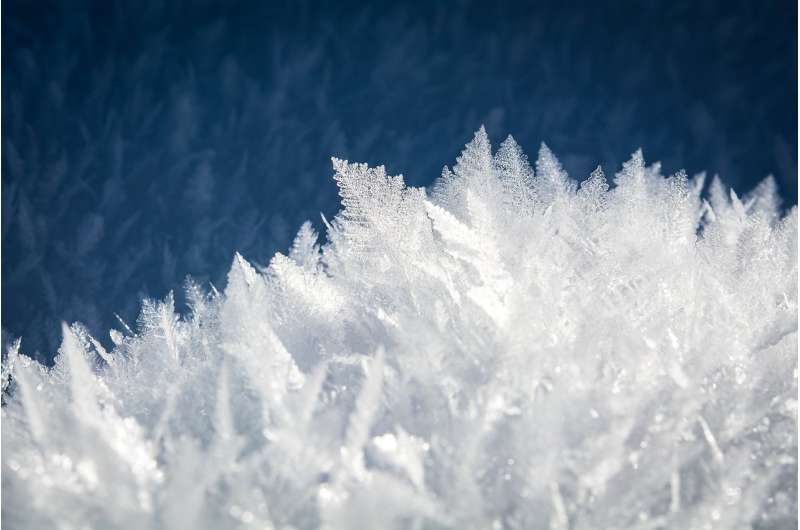Simulated microgravity system created to experiment with materials

Crystallization studies conducted in space laboratories, which are costly and unaffordable for most research laboratories, showed the valuable effects of microgravity during the crystal growth process and the morphogenesis of materials. Now, a research study led by a scientific team of the University of Barcelona, has created an easy and efficient method to achieve experimentation conditions of microgravity on Earth that simulate those in space. The results were published in the journal Advanced Materials in an article highlighted on its front cover.
To get these simulated microgravity conditions, the researchers used custom-made microfluidic devices. These are instruments that use small quantities of fluids on a micro-chip to conduct laboratory tests. With these devices, the 2D porous crystalline molecular structures have been created (formed by one layer of atoms). According to Josep Puigmartí Luis, ICREA researcher at the Department of Physical Chemistry and member of the Institute of Theoretical and Computational Chemistry (IQTCUB), "we confirmed that the experiments under these simulated microgravity conditions have unprecedented effects on the orientation, compactness and generation of 2D crystalline and porous materials."
To create this new system, the research team, which counts on the participation of members of the Catalan Institute of Nanoscience and Nanotechnology (ICN2) and the Institute of Materials Science of Barcelona (ICMAB-CSIC), designed a microfluidic device which consists of two interlinked substrates with a fine silicone film with variable thicknesses (from 200 to μm). The objective was to create a microfluidic environment of 6cm long and 1.5cm wide. One of the surfaces has two machine inlet ports that enable the complete filling of the microfluidic environment and prevent the appearance of air bubbles. The system enabled the growth of a 2D metalorganic framework prototype (MOF), which forms a millimetric layer without defects with conductivity properties that act at a long distance under environmental conditions. The research group used the light line NCD-SWEET from the ALBA Synchrotron to study crystallinity, structure and orientation of the created 2D material.
"The spatio-temporal control in the growth of this material obtained with the simulated microgravity conditions is unprecedented in the scientific literature. The microfluidic device has allowed us to develop centimeter-long thin layers and study the previously undescribed electronic properties of the material," explains Noemí Contreras Pereda, from ICN2.
To date, the obtained value with this new method had been achieved outside an inert atmosphere with pellets prepared under high pressures. "This new simulated microgravity system will be like a 'playground' for chemists, physicists, and materials scientists who want to process 2D functional devices and materials," concludes Contreras Pereda.
More information: Noemí Contreras‐Pereda et al, Synthesis of 2D Porous Crystalline Materials in Simulated Microgravity, Advanced Materials (2021). DOI: 10.1002/adma.202101777
Journal information: Advanced Materials
Provided by University of Barcelona





















